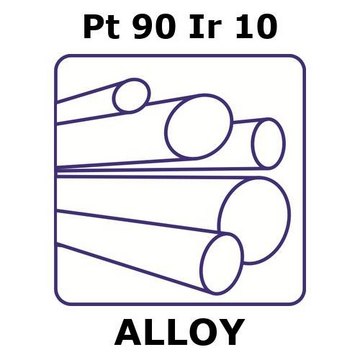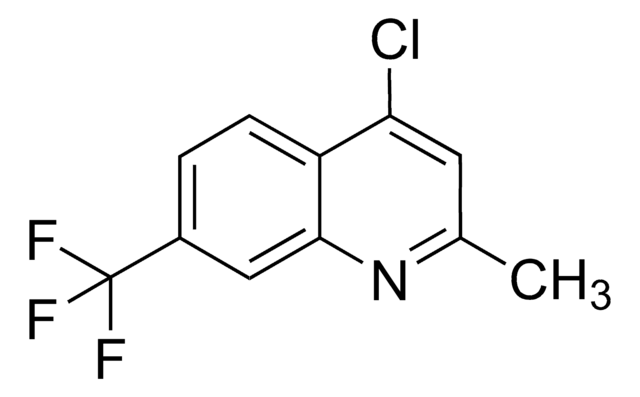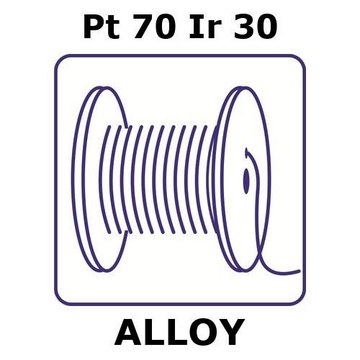GF97994468
Iridium
wire, straight, 500mm, diameter 0.5mm, as drawn, 99.9%
Synonym(s):
Iridium, IR005131
Sign Into View Organizational & Contract Pricing
All Photos(2)
About This Item
Empirical Formula (Hill Notation):
Ir
CAS Number:
Molecular Weight:
192.22
MDL number:
UNSPSC Code:
12141720
PubChem Substance ID:
NACRES:
NA.23
Recommended Products
Assay
≥99.9%
form
wire
manufacturer/tradename
Goodfellow 979-944-68
resistivity
4.71 μΩ-cm
bp
4130 °C (lit.)
mp
2450 °C (lit.)
density
22.65 g/cm3 (lit.)
SMILES string
[Ir]
InChI
1S/Ir
InChI key
GKOZUEZYRPOHIO-UHFFFAOYSA-N
Looking for similar products? Visit Product Comparison Guide
General description
For updated SDS information please visit www.goodfellow.com.
Legal Information
Product of Goodfellow
Regulatory Information
新产品
Choose from one of the most recent versions:
Certificates of Analysis (COA)
Lot/Batch Number
It looks like we've run into a problem, but you can still download Certificates of Analysis from our Documents section.
If you need assistance, please contact Customer Support.
Already Own This Product?
Find documentation for the products that you have recently purchased in the Document Library.
Low-valent ruthenium and iridium hydride complexes as alternatives to Lewis acid and base catalysts.
S Murahashi et al.
Accounts of chemical research, 33(4), 225-233 (2000-04-25)
The discovery of a new chemical reaction often leads to new applications and new chemical principles. Low-valent ruthenium and iridium hydride complexes are highly useful redox Lewis acid and base catalysts. Nitriles are activated by these catalysts and undergo reactions
Soo Bong Han et al.
Chemical communications (Cambridge, England), (47)(47), 7278-7287 (2009-12-22)
Existing methods for enantioselective carbonyl allylation, crotylation and tert-prenylation require stoichiometric generation of pre-metallated nucleophiles, and often employ stoichiometric chiral modifiers. Under the conditions of transfer hydrogenation employing an ortho-cyclometallated iridium C,O-benzoate catalyst, enantioselective carbonyl allylations, crotylations and tert-prenylations are
Stephen J Roseblade et al.
Accounts of chemical research, 40(12), 1402-1411 (2007-08-04)
Asymmetric hydrogenation is one of the most important catalytic methods for the preparation of optically active compounds. For a long time the range of olefins that could be hydrogenated with high enantiomeric excess was limited to substrates bearing a coordinating
Henrik Tækker Madsen et al.
Chemosphere, 109, 84-91 (2014-05-31)
Electrochemical oxidation is a promising technique for degradation of otherwise recalcitrant organic micropollutants in waters. In this study, the applicability of electrochemical oxidation was investigated concerning the degradation of the groundwater pollutant 2,6-dichlorobenzamide (BAM) through the electrochemical oxygen transfer process
Nicolas P E Barry et al.
Chemical Society reviews, 41(8), 3264-3279 (2012-02-07)
This review describes how the incorporation of dicarba-closo-dodecarboranes into half-sandwich complexes of ruthenium, osmium, rhodium and iridium might lead to the development of a new class of compounds with applications in medicine. Such a combination not only has unexplored potential
Our team of scientists has experience in all areas of research including Life Science, Material Science, Chemical Synthesis, Chromatography, Analytical and many others.
Contact Technical Service


